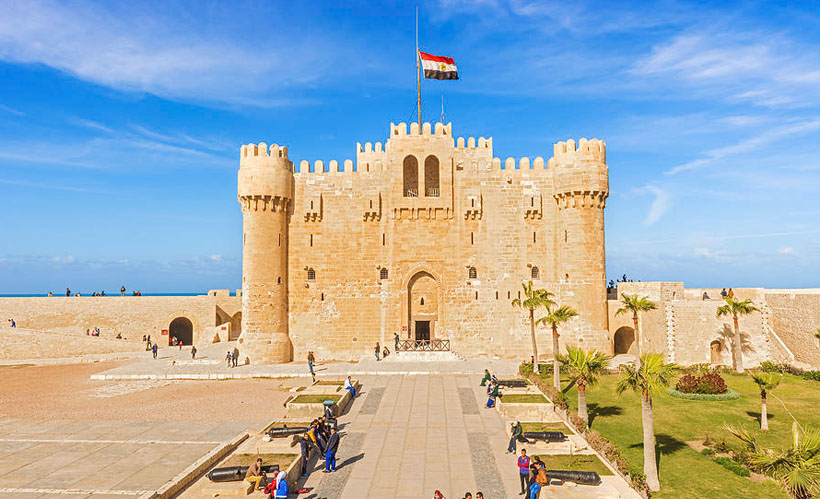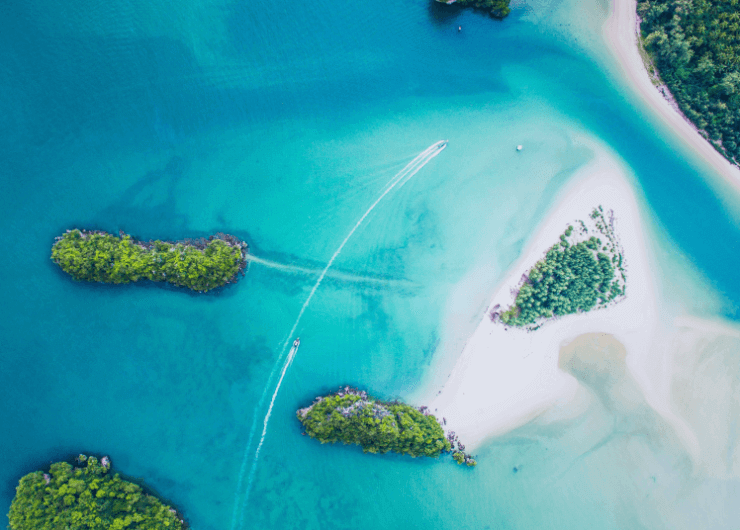Cultural, historical, adventure, and custom customized trips are just a few of the tours that Deluxe trips offer in Egypt and Jordan.

The Sultan Qaitbay Citadel or Citadel of Qaitbay is Alexandria's most celebrated symbol. Proudly standing at the point of the Mediterranean Sea, this medieval fortress has guarded Egypt's coast for centuries and is a prime representative of medieval Islamic military architecture. But behind its historical walls lies a wealth of sultans, sea battles, ancient ruins, and untold secrets yet to be uncovered that continue to fascinate historians and tourists.
In AD 1477, the citadel was built by Sultan Al-Ashraf Qaitbay, an Egyptian Mamluk sultan, during a time when Egypt was under greater threats from the Ottoman Empire and pirate attacks on the Mediterranean coast. Qaitbay was a shrewd and clever ruler who was determined to strengthen Egypt's defenses, especially in Alexandria, one of the major cities since the days of Alexander the Great.
The site on which the fortress was constructed was of historical and symbolic importance—it was where the Pharos of Alexandria, one of the Seven Wonders of the Ancient World the Great Pyramids of Giza, stood. When the ancient lighthouse fell with earthquakes, Qaitbay ordered the new fortress to be built on the site using most of the original material and stones of the destroyed Pharos.
The Citadel of Qaitbay was not only built for protection but also to depict the sultan's preference for architecture, as well as his military genius. The structure is rectangular in form, built with towering walls of stone, spherical towers, and arrow slits, showing Islamic architectural features, as well as fortress engineering.
The citadel contains a mosque, barracks, warehouses, and an interior courtyard. Its waterfront location allowed cannons and guards to monitor ships and defend against any sea-borne attacks. With its walls thick and multi-storyed, it was almost impossible to breach by 15th-century standards.
Today, the strategic location of the fort offers stunning vistas of the Mediterranean, and it is a photographers' and tourists' favorite.
Though the citadel was built for defense, it contains plenty of secrets and hidden tales. Some of the most interesting are mentioned below:
Remains of Pharos Lighthouse: Archaeologists have always suspected that portions of the foundation of the original lighthouse lie beneath the citadel. Diving excavations off the site have unearthed columns and stones belonging to the ancient wonder.
Underground Tunnels: Legend has it that there are underground tunnels under the citadel for the use of escaping or hiding goods. While there have been some narrow openings found, it is unknown just how large these tunnels are.
Symbol of Resistance: Napoleon invaded Egypt in 1798, and the citadel was overpowered but later recovered. It remained a symbol of local resistance to colonial rule and foreign occupation throughout history.
For more than a thousand years, the Citadel of Qaitbay has served as Alexandria's "Pearl of the Mediterranean" protector. It is more than just a fortress; it is an icon of Egyptian power, Islamic heritage, and architectural prowess. Egyptians and visitors consider it a place of ancient history mingling with nature, for it remains the star of the city waterfront promenade.
The citadel also remains a popular destination for learning tours, historical performances, and community cultural events. Its museum now features maritime artifacts, including cannons, swords, and ancient ship equipment, to facilitate easier imagination of the guard and warrior lifestyle during Mamluk times.
Located at the Eastern Harbor's waterfront in Alexandria, the citadel is easily within walking distance of most hotels and central points of the city. It should be seen early in the morning or near sunset when the sea wind and golden light complement the beauty of the stone structure.
Plan your perfect Alexandria day tour to uncover its top attractions is able to take guided tours of its interior, towers, and shoreline. Its interior, towers, and coast can be toured by tourists in a combination with other sites nearby like the Alexandria Library, Pompey's Pillar, and the Catacombs of Kom El Shoqafa.
Discover now our answers to the most common questions that may come to your mind about tourism and trips to Egypt
Cultural, historical, adventure, and custom customized trips are just a few of the tours that Deluxe trips offer in Egypt and Jordan.
The Dead Sea, Petra in Jordan, the Pyramids of Giza, Luxor's historic temples, and many other famous sites can be expected to be explored with Deluxe Tours.
offer a hassle-free holiday, Deluxe Tours' packages generally include lodging, transport, meals, guided tours with experienced local experts, and entry fees to attractions.
Spring (March to May) and fall (September to November) offer the finest weather for sightseeing and outdoor activities, making those months the best times to visit Egypt and Jordan.
These two countries are close by, only a 1.5-hour flight apart, and when combined, offer a variety of distinctive experiences. We advise you to spend at least 12 days visiting both countries for a truly unforgettable experience
Combining the eclipse viewing with visits to historic sites like the Pyramids of Giza, the Valley of the Kings, and a Nile River cruise are highly recommended.
